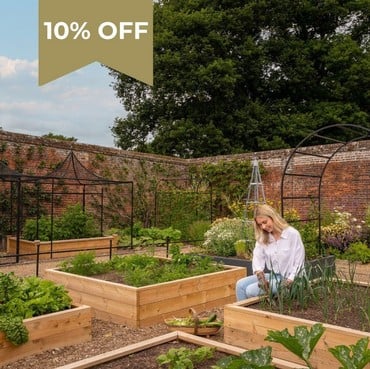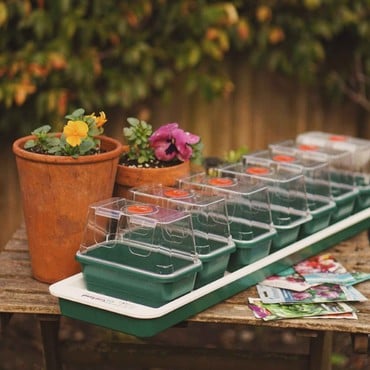The lesser-known relative of onions and garlic, leeks are an easy to grow veggie with the same fantastic health benefits. With a delicious mild flavour that sweetens as it cooks, leeks are perfect onion substitutes in all kinds of dishes from casseroles to risottos. This stalky green veggie is particularly frost hardy and can be left growing in the veg patch later in the year and overwinter. And although they have a longer than most growing period, home-grown leeks are well worth the wait.
Did you know? The humble leek has been a national emblem of Wales for thousands of years
The growing process
Pick your varieties
There is an abundance of leek varieties to choose from, here are just a few of our reliable favourites:
Porbella
An outstanding garden variety with excellent winter hardiness and good resistance to rust. Produced good yields of sturdy, pure white, thick stems with dark green leaves.
Musselburgh
A well-known, reliable variety that has an excellent flavour and tender texture when cooked. It is exceptionally hardy and stands well in even the coldest winter weather.
Apollo
Vigorous plants with attractive green leaves that fan out from a thick white shank. Resistant to rust, this variety is high yielding and ideal for close planting.
King Richard
A high yielding all round favourite, that can be grown as a mid-season leek or baby leek. It has a long white body and pale green leaves, with a mild sweet taste.
Sowing
Leeks are best suited for growing in the open ground, but you could grow several in large, deep containers or raised beds. For best results, sow seeds very thinly in a separate seed bed in a shallow drill about half an inch deep. Cover with soil and water in well. For a very early crop, sow indoors in cell trays in a heated propagator on a windowsill.
When the plants are 15-20cm tall, they should be transplanted to their permanent cropping position. Make 5cm wide, 15cm deep holes with a dibber 15cm apart in rows and place a plant into each hole. Fill the hole with water to settle the roots. During extended dry periods, water the plants every 7-10 days.


Leek care advice
• The tops and roots of leeks do not need trimming – this is an old wives’ tale
• Ensure the soil does not become waterlogged as this can cause rotting
• Leeks do not do well in compacted soil, so adding some well-rotted organic matter helps this crop dramatically
• Cover the lower part of the stems to produce more edible stalks, and less green growth
Harvesting
Harvest leeks as soon as they are big enough to use. Once mature they can be left in the ground for weeks while you harvest only what you want. Majority of leeks mature 100-120 days after sowing seed but a few varieties mature in as few as 60 days. They are ready when their white stem is 3 inches long or greater.
Before storing, brush as much soil as possible off your harvested leeks and wash them thoroughly. They are most flavourful when used fresh, but can be stored in the fridge for 7-10 days. To store leeks in the freezer, remove all the dark green leaves, the root and slice the leek in half. Then thoroughly wash and cut them into half-moon slices.
Tip: Harvest before they start to widen too much at the base, don’t allow leeks to form bulbs.
Other uses for your leeks
Looking for some creative yet delicious ways to use your harvested leeks? Luckily, leeks can be used in many different ways, some of which you may never have considered.
Parmesan roasted leeks
These delicious leeks work great as a side dish. Simmer your sliced leeks (use the white and light green parts) in water for a few minutes. Drain and place in a baking dish. Add butter, seasoning and parmesan and bake.
Deep-fried leeks
Slice your leeks into long, thin strips and deep-fry them in oil. Crumble them up and use as a topping on soups and salads, like bacon bits.
Stir-fried leeks
Leeks are a delicious addition to a stir-fry. The tough green leaves can withstand the high heat of this method, but make sure they are stirred continuously and cooked briefly. We’d recommend adding them to the stir-fry last.
Caramelised leeks
Much like onions, leeks also taste divine caramelised. Slice your leeks into thin matchsticks. Heat some oil in a large pan, add your leeks and cook covered. Leave to cook for 8-10 minutes stirring occasionally. Season your leeks and continue cooking until golden brown and caramelised.


















_3303.JPG)











